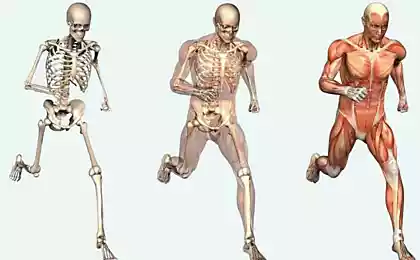178
The Life Path of Ignaz Semmelweiss
Now. discovery They occur with an enviable frequency, and they are perceived properly. The same can not be said about the XIX century or earlier, especially when it comes to medicine. Undoubtedly, it was then that discoveries were made, which gave rise to the progress, the fruits of which we now enjoy, but with what difficulty.
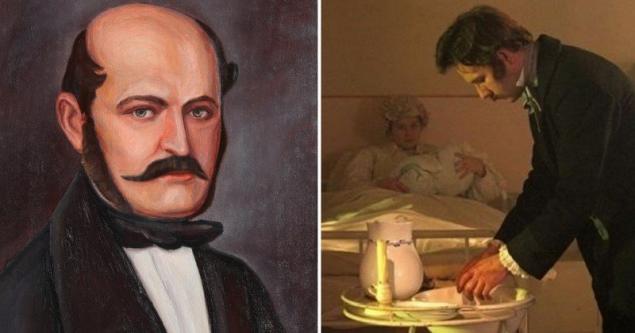
Back then, medicine was a bit like shamanism and diamond dancing, and rational theories could be banally ridiculed. Today. "Site" It tells just such a great story. medical.
Today we can not imagine a hospital without sterile tools, clean rooms and fresh bedding, but in the XIX century it was not even thought about. Few people at the time could have imagined that dirty hands or unwashed laundry could lead to dire consequences. But thanks to a Hungarian doctor, everything changed.
Ignac Philippe Semmelweiss was born on July 17, 1818 in the Hungarian city of Pest in the family of a merchant. His father wanted his son to become a military judge, so he sent him to study law school. However, Ignaz became interested in natural sciences and transferred to the medical faculty. It is said that he made this decision after seeing a young woman die of childbirth fever, but this is only one version.
459468
At that time, childbirth fever (so called postpartum sepsis) was considered invincible and claimed more lives than severe pneumonia. Sometimes up to 30% of women in labor were infected with fever with a fatal outcome, and so in almost all maternity wards.
At the time, no one could name the exact cause, so many doctors called it an “atmospheric cosmic telluric impact.” Saying that this is something extraterrestrial that affects women in labor. Some said it was because of the priest who came and unnerved the women, others blamed the women themselves and said that they had already entered the ward sick.
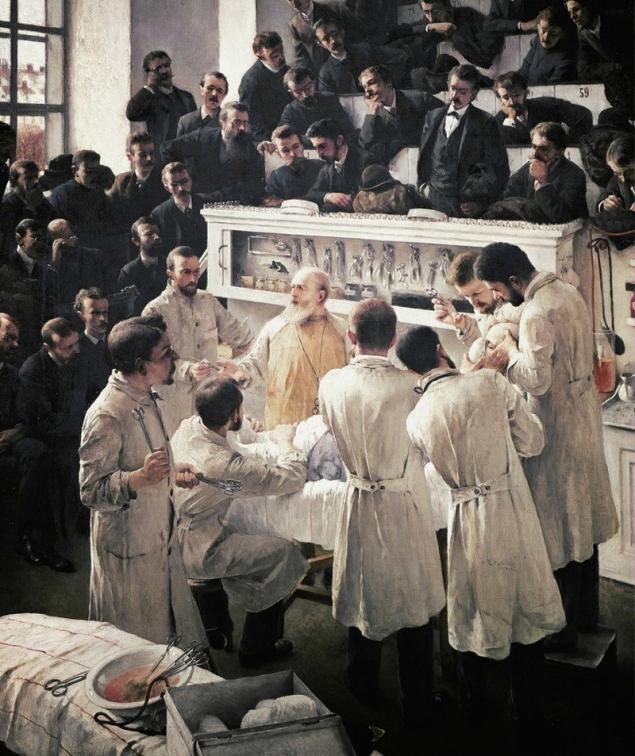
After graduation, Ignac got a job at the Vienna Hospital. By the standards of the time it was a large hospital with two thousand beds. About 6,000 women passed through the maternity ward each year. The maternity department consisted of two smaller ones: in the first, medical students worked under the guidance of Professor Klein, and in the second, midwives worked, retrained as midwives.
Soon, the young doctor noticed that in the first department the frequency of cases of childbirth fever is several times higher than in the second. He struggled with this problem for a long time, trying to understand what the cause was, but he found no answer. Then he asked for a vacation and went to Venice for a while. While there, he received a message that his close friend Jacob Kolletszka had died in Vienna.
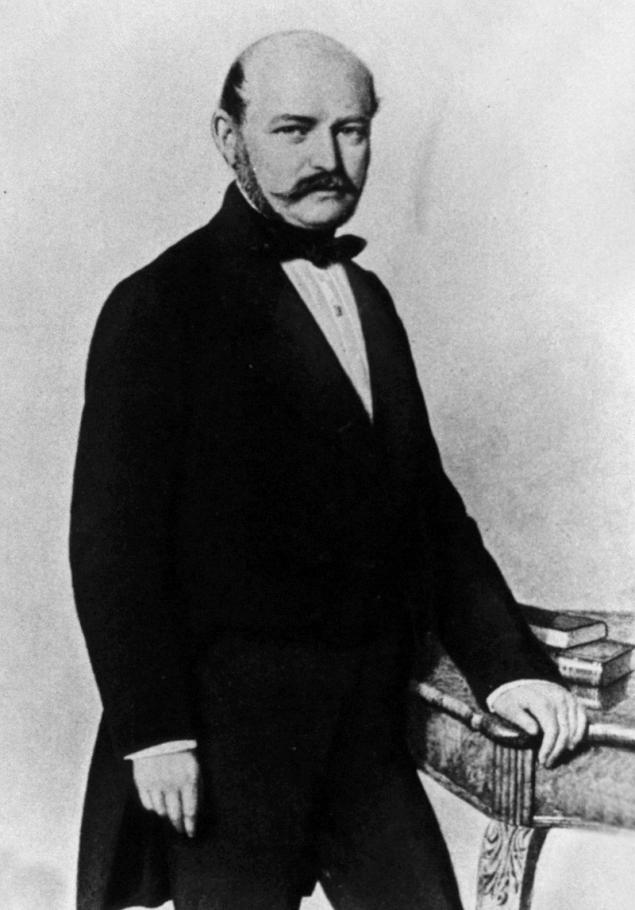
As it turned out, Jacob had the same symptoms as women with sepsis. He learned that before his death, Colletsky accidentally injured himself with a scalpel while conducting an autopsy. Then Semmelweiss overshadowed the idea that the fault of the cadaver particles that medical students carry on their hands. First they perform an autopsy, and then they give birth, thus infecting women.
Since the midwives did not work in the morgue, the mortality rate of mothers in that department was lower. Learning this, the young doctor ordered all students to treat their hands with chlorine solution before going to the women in labor. This measure worked, the frequency of birth fever decreased by almost 10 times.
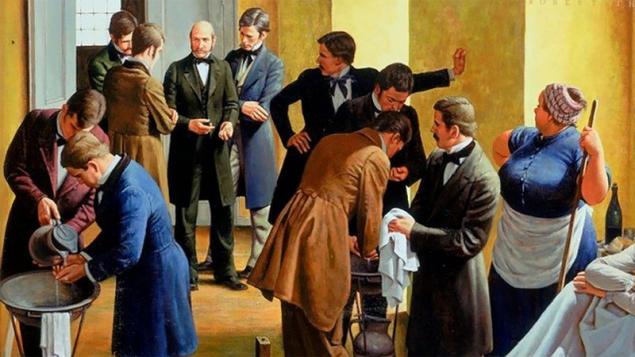
Semmelweiss was ridiculed for this idea, even though his method worked. The professor didn’t like the fact that his young assistant forced even him, the luminary of medicine, to wash his hands before examining patients. However, Semmelweiss did not pay attention to this and tried to prove to everyone that it was necessary.
It would seem that it can speak better than statistics: in May, the professor’s department sent 12% of women into childbirth, and in the summer, after the introduction of the rule, the figure fell almost 10 times. In terms of indicators, the department was equal to the midwifery clinic. In October, however, a disaster occurred in the hospital: 12 women lying in the same row fell ill and died.
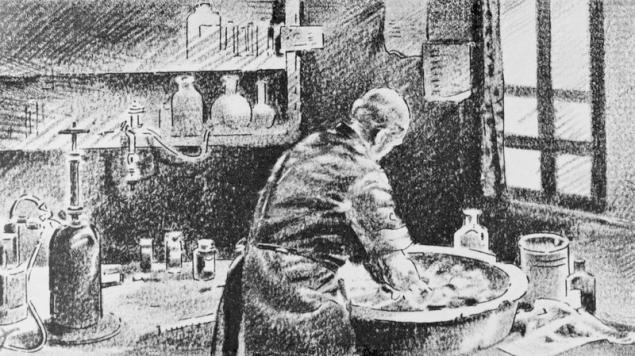
The cause was discovered instantly. On the first bed was a woman with a mucosal infection, it was not much different from septic patients. Then it was found that the infection can be transmitted from the living. From that day on, Semmelweiss began washing his hands after every inspection and disinfecting his tools. By the end of the year, the figure was even lower, only 1.2% of mothers died.
However, even this did not convince the doctors of the correctness of his theory. Colleagues ridiculed him, few applied the disinfection rule. He wrote a book about why it is so important to treat your hands with chlorine solution, but it was not successful. Ignatz spoke a lot, trying to prove his theory, wrote letters to other doctors, begging them to listen, but everything was in vain.
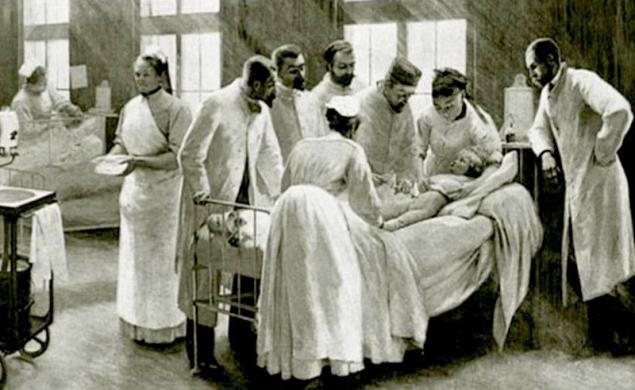
The idea that the cause of the disease was in poorly washed hands was too revolutionary for its time. She eventually killed Semmelweiss. In 1849 he lost his job in the hospital. According to one version, because of his participation in political protests, on the other - because his theory did not like the leadership and they decided to get rid of him.
A year later, Semmelweiss returned to Pest, where he headed the maternity ward for about 6 years. With the help of his theory, he managed to achieve almost zero mortality. However, his achievements were never appreciated, and he was too worried about it. Because of this, his mental health suffered greatly.
He began to behave aggressively, proving to others that his theory was correct. Once he even ran up to a pregnant woman in the street and told her to force the doctor to treat her hands with a solution of chlorine before giving birth. From the beginning of 1860 he was constantly depressed, behaved strangely and reduced all conversations to childbirth fever.
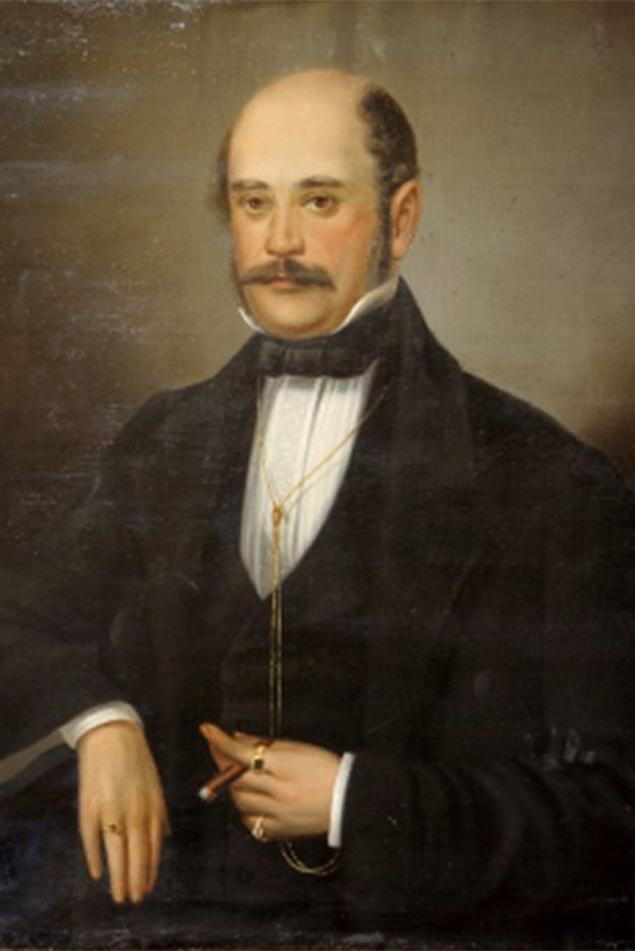
In 1865, a colleague of Semmelweiss wrote a petition to send Ignaz to a psychiatric clinic for treatment. In the same year, the doctor was tricked into a hospital in Debling, where he was detained by orderlies. He was twisted, shoved into a straitjacket and sent to a solitary confinement, prescribed cold water and laxatives as treatment.
However, this conclusion did not last long, Semmelweiss died two weeks later, at the 47th year of life. On the eve of his departure, he performed an operation and was injured, contracting an infection. The main irony is that the cause of his own death was the same infection that he had been fighting all his life.
Only a few medical publications mentioned this. Years later, however, he was recognized. He is now considered the founder of asepticism. The University of Budapest is named after him and there is a clinic named after him in Vienna. In 1906, he was erected a monument as the savior of mothers.

Thanks to his discovery, Ignaz Semmelweiss saved millions of women’s lives and did what modern medicine would be impossible without. What a pity that the complacency and stubbornness of some people prevented him from saving even more and even then making a breakthrough in medicine. We can only thank him for his perseverance and great contribution to medicine.
There are people who change the world and they inspire us. Recently, we told the story of Ernst Moreau, who saved thousands of children’s lives with the help of ordinary carrot soup.
In the modern world, there is also a place for heroes. We were inspired by the story of a South Sudanese doctor who stays with his patients no matter what.
Sometimes it is enough to do a small good deed to make the world around you a better place. Don’t forget to share the amazing story of this brave doctor with your friends, everyone should know about it.

Back then, medicine was a bit like shamanism and diamond dancing, and rational theories could be banally ridiculed. Today. "Site" It tells just such a great story. medical.
Today we can not imagine a hospital without sterile tools, clean rooms and fresh bedding, but in the XIX century it was not even thought about. Few people at the time could have imagined that dirty hands or unwashed laundry could lead to dire consequences. But thanks to a Hungarian doctor, everything changed.
Ignac Philippe Semmelweiss was born on July 17, 1818 in the Hungarian city of Pest in the family of a merchant. His father wanted his son to become a military judge, so he sent him to study law school. However, Ignaz became interested in natural sciences and transferred to the medical faculty. It is said that he made this decision after seeing a young woman die of childbirth fever, but this is only one version.
459468
At that time, childbirth fever (so called postpartum sepsis) was considered invincible and claimed more lives than severe pneumonia. Sometimes up to 30% of women in labor were infected with fever with a fatal outcome, and so in almost all maternity wards.
At the time, no one could name the exact cause, so many doctors called it an “atmospheric cosmic telluric impact.” Saying that this is something extraterrestrial that affects women in labor. Some said it was because of the priest who came and unnerved the women, others blamed the women themselves and said that they had already entered the ward sick.

After graduation, Ignac got a job at the Vienna Hospital. By the standards of the time it was a large hospital with two thousand beds. About 6,000 women passed through the maternity ward each year. The maternity department consisted of two smaller ones: in the first, medical students worked under the guidance of Professor Klein, and in the second, midwives worked, retrained as midwives.
Soon, the young doctor noticed that in the first department the frequency of cases of childbirth fever is several times higher than in the second. He struggled with this problem for a long time, trying to understand what the cause was, but he found no answer. Then he asked for a vacation and went to Venice for a while. While there, he received a message that his close friend Jacob Kolletszka had died in Vienna.

As it turned out, Jacob had the same symptoms as women with sepsis. He learned that before his death, Colletsky accidentally injured himself with a scalpel while conducting an autopsy. Then Semmelweiss overshadowed the idea that the fault of the cadaver particles that medical students carry on their hands. First they perform an autopsy, and then they give birth, thus infecting women.
Since the midwives did not work in the morgue, the mortality rate of mothers in that department was lower. Learning this, the young doctor ordered all students to treat their hands with chlorine solution before going to the women in labor. This measure worked, the frequency of birth fever decreased by almost 10 times.

Semmelweiss was ridiculed for this idea, even though his method worked. The professor didn’t like the fact that his young assistant forced even him, the luminary of medicine, to wash his hands before examining patients. However, Semmelweiss did not pay attention to this and tried to prove to everyone that it was necessary.
It would seem that it can speak better than statistics: in May, the professor’s department sent 12% of women into childbirth, and in the summer, after the introduction of the rule, the figure fell almost 10 times. In terms of indicators, the department was equal to the midwifery clinic. In October, however, a disaster occurred in the hospital: 12 women lying in the same row fell ill and died.

The cause was discovered instantly. On the first bed was a woman with a mucosal infection, it was not much different from septic patients. Then it was found that the infection can be transmitted from the living. From that day on, Semmelweiss began washing his hands after every inspection and disinfecting his tools. By the end of the year, the figure was even lower, only 1.2% of mothers died.
However, even this did not convince the doctors of the correctness of his theory. Colleagues ridiculed him, few applied the disinfection rule. He wrote a book about why it is so important to treat your hands with chlorine solution, but it was not successful. Ignatz spoke a lot, trying to prove his theory, wrote letters to other doctors, begging them to listen, but everything was in vain.

The idea that the cause of the disease was in poorly washed hands was too revolutionary for its time. She eventually killed Semmelweiss. In 1849 he lost his job in the hospital. According to one version, because of his participation in political protests, on the other - because his theory did not like the leadership and they decided to get rid of him.
A year later, Semmelweiss returned to Pest, where he headed the maternity ward for about 6 years. With the help of his theory, he managed to achieve almost zero mortality. However, his achievements were never appreciated, and he was too worried about it. Because of this, his mental health suffered greatly.
He began to behave aggressively, proving to others that his theory was correct. Once he even ran up to a pregnant woman in the street and told her to force the doctor to treat her hands with a solution of chlorine before giving birth. From the beginning of 1860 he was constantly depressed, behaved strangely and reduced all conversations to childbirth fever.

In 1865, a colleague of Semmelweiss wrote a petition to send Ignaz to a psychiatric clinic for treatment. In the same year, the doctor was tricked into a hospital in Debling, where he was detained by orderlies. He was twisted, shoved into a straitjacket and sent to a solitary confinement, prescribed cold water and laxatives as treatment.
However, this conclusion did not last long, Semmelweiss died two weeks later, at the 47th year of life. On the eve of his departure, he performed an operation and was injured, contracting an infection. The main irony is that the cause of his own death was the same infection that he had been fighting all his life.
Only a few medical publications mentioned this. Years later, however, he was recognized. He is now considered the founder of asepticism. The University of Budapest is named after him and there is a clinic named after him in Vienna. In 1906, he was erected a monument as the savior of mothers.

Thanks to his discovery, Ignaz Semmelweiss saved millions of women’s lives and did what modern medicine would be impossible without. What a pity that the complacency and stubbornness of some people prevented him from saving even more and even then making a breakthrough in medicine. We can only thank him for his perseverance and great contribution to medicine.
There are people who change the world and they inspire us. Recently, we told the story of Ernst Moreau, who saved thousands of children’s lives with the help of ordinary carrot soup.
In the modern world, there is also a place for heroes. We were inspired by the story of a South Sudanese doctor who stays with his patients no matter what.
Sometimes it is enough to do a small good deed to make the world around you a better place. Don’t forget to share the amazing story of this brave doctor with your friends, everyone should know about it.










